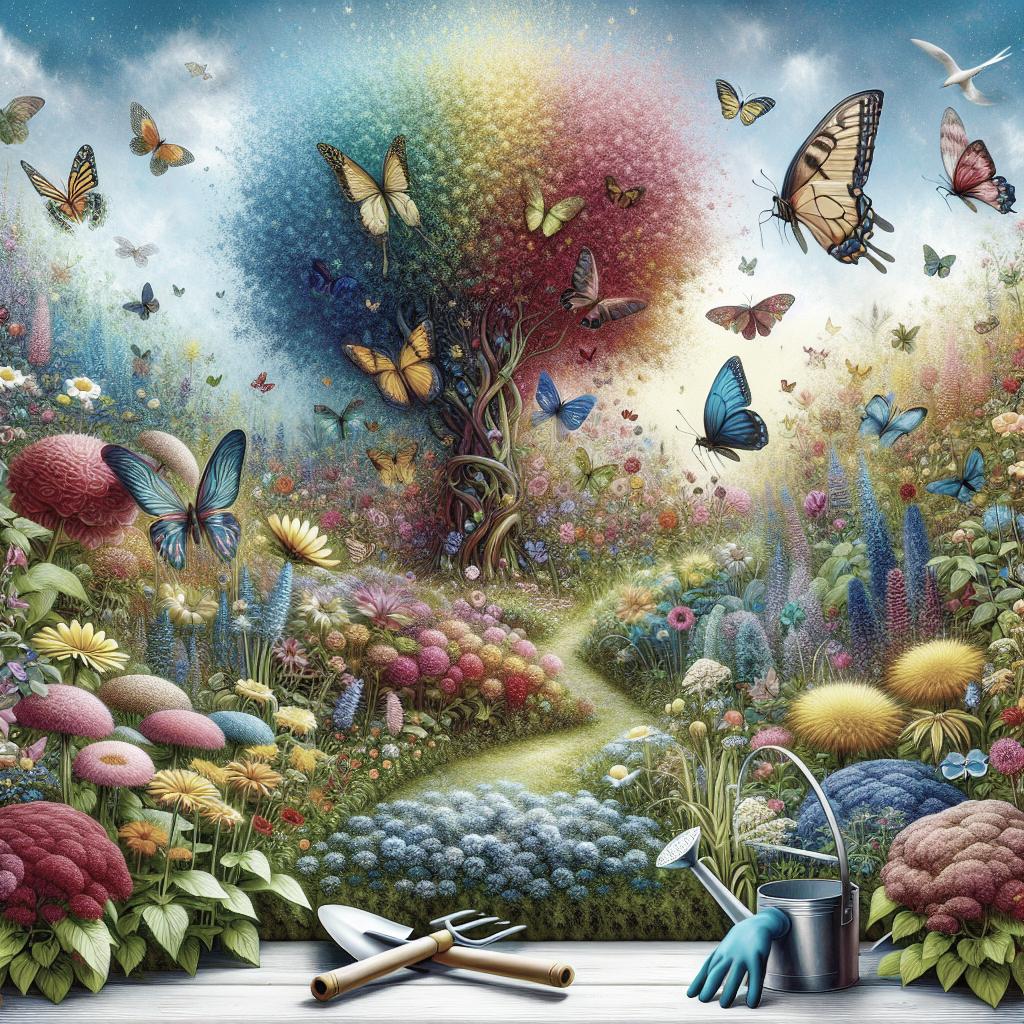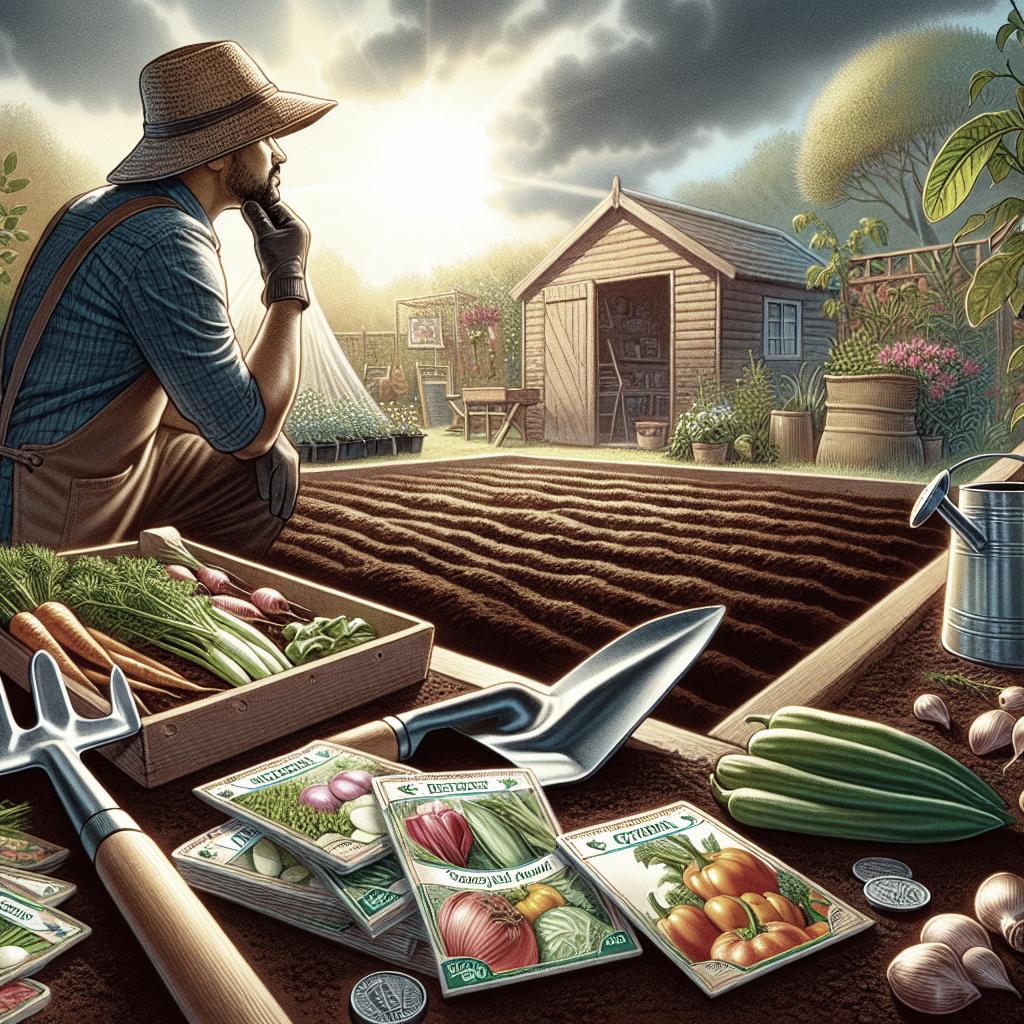“`html
How to Create a Butterfly Garden
Creating a butterfly garden is a rewarding way to connect with nature and support biodiversity. Butterflies are captivating creatures whose presence can bring charm and liveliness to any garden. This blog post will guide you through the steps to cultivate a haven for these lovely insects. We’ll explore the importance of selecting butterfly-friendly plants, creating a suitable habitat, and understanding the basic needs of butterflies. From choosing flowers of varying heights to ensuring a safe environment free from harmful pesticides, each step ensures your garden is both functional and visually appealing. Whether you’re a seasoned gardener or a passionate beginner, you’ll find valuable tips to help you develop a butterfly garden that will flourish with color and activity.
Plant Butterfly-Friendly Flowers
What Is Butterfly Gardening?
Butterfly gardening involves arranging a garden to attract and sustain butterflies. It requires an understanding of the lifecycle of butterflies, which includes adults and caterpillars. A well-designed butterfly garden combines host plants for caterpillars and nectar plants for adult butterflies. By mimicking the natural habitat of butterflies, gardeners can provide the resources they need to thrive.
The goal is to create an environment where butterflies can find food, mate, lay eggs, and shelter from predators and harsh weather. Combining these elements increases the chances of attracting a variety of butterfly species, making your garden a bustling hive of activity and natural beauty.
Perennials
Perennials are an excellent choice for butterfly gardens because they return each year, providing a reliable nectar source. Popular choices include coneflowers, butterfly weed, and black-eyed Susans. These plants not only offer aesthetic beauty through their blooms but also serve as valuable nectar providers.
When selecting perennials, consider those that are native to your region, as they are often more attractive to local butterfly species. Additionally, native plants are generally easier to maintain since they’re well-suited to local climate and soil conditions.
Flowering Shrubs
Flowering shrubs can play a crucial role in a butterfly garden. They provide structure, height, and a continuous source of nectar. Butterfly bushes, lilacs, and mock oranges are popular choices. These shrubs offer both food and habitat for butterflies.
Shrubs can also contribute to the garden’s microclimate, providing shade and shelter in harsh weather. Plan strategically to ensure they don’t overcrowd smaller plants, maintaining a balance that benefits the butterflies and your garden’s aesthetics.
Nectar-Rich Flowers
Nectar-rich flowers are vital for providing the energy butterflies need. Opt for brightly colored flowers like lantanas, marigolds, and zinnias as they effectively attract butterflies. As butterflies have a keen sense of smell, fragrant blooms can enhance your garden’s appeal.
Consider planting flowers in clusters to make it easier for butterflies to spot them. This clustering mimics the natural setting and makes it easier for butterflies to feed without much effort, increasing the likelihood of them returning.
Tip
To maximize your garden’s impact, provide a succession of blooms throughout the growing season. By choosing a variety of plants with different blooming periods, you can ensure butterflies have access to nectar from spring through fall.
This approach not only satisfies butterfly food needs but also keeps your garden vibrant and colorful through different seasons, offering a perpetual visual feast.
Provide Flowers of Varying Heights
A diverse butterfly garden features flowers of various heights, thus expanding the habitat possibilities. Butterflies are attracted to both low-growing plants and tall bloomers, as different species prefer different nectar sources.
Layering plants adds visual depth and creates a tiered food supply, encouraging a steady influx of butterflies. Tuck lush ground-covering plants among taller blooming perennials for a more organic landscape that supports a variety of butterfly preferences.
Add Plants for Butterfly Caterpillars
Adult butterflies aren’t the only visitors to your garden; caterpillars play an equally important role. Adding host plants for butterfly larvae ensures a complete life cycle. Monarchs, for instance, lay their eggs on milkweed, while black swallowtails prefer plants like dill and parsley.
Including these plants in your garden increases the likelihood of butterflies laying eggs nearby. Host plants can create an anchor in your garden that attracts butterflies by meeting one of their most crucial needs: a beneficial environment for their offspring.
Choose a Sunny Location
Butterflies are warm-weather creatures and thrive in sunlight. Choose a garden location that receives at least six hours of sunlight per day. Sunlit areas help mature plants produce more nectar and invigorate butterflies, promoting an active ecosystem.
Placing your butterfly garden in a sunny spot encourages more frequent visits. It also keeps the environment warm, aiding the transformation of caterpillars into butterflies by maintaining optimal growth conditions for those stages.
Include Butterfly Shelter Areas
Shelter from winds and predators significantly enhances the viability of your butterfly garden. Provide low-lying plants, shrubs, or even purpose-built butterfly houses where butterflies can seek out cover.
Consider the local landscape and natural obstacles when creating these shelters. Adding stone walls, hedges, or even garden art can block breezes and create niches for butterflies to rest or roost, lending resilience to your garden’s ecosystem.
Offer Alternative Butterfly Foods
While nectar-rich flowers are the main attraction, you can offer additional food sources such as overripe fruit. Plate slices of banana, strawberry, or watermelon to appeal to different species.
These sugar-filled supplements can make your garden a year-round haven, ensuring butterflies remain even when flowers are not in full bloom. Understand that moderation is key, as too much fruit can attract other wildlife that may disrupt your butterfly garden.
Provide Butterfly Puddling Stations
Creating a puddling station can dramatically increase butterfly activity in your garden. Puddling provides essential salts and minerals found in water, which are not available in nectar.
Simple puddling stations can be constructed by placing wet sand or soil in a shallow dish or basin. Keep the material consistently moist, and place it near flowering plants for easy access by butterflies.
Avoid Pesticides That Harm Butterflies
Pesticides can significantly harm butterflies, negating the positive effects of your butterfly-friendly efforts. Opt for natural pest management techniques like handpicking invading insects or introducing natural predators such as ladybugs.
Always check labels on gardening products to ensure they are safe for beneficial insects. Creating a balanced ecosystem in your garden both supports butterflies and maintains overall plant health without the need for chemical intervention.
Final Thoughts
| Steps to Create a Butterfly Garden | Key Points |
|---|---|
| Plant Butterfly-Friendly Flowers | Select perennials, flowering shrubs, nectar-rich flowers, consider native plants |
| Provide Flowers of Varying Heights | Diverse plant heights support various butterfly species |
| Add Plants for Butterfly Caterpillars | Include host plants like milkweed or dill |
| Choose a Sunny Location | Ensure at least six hours of sunlight per day |
| Include Butterfly Shelter Areas | Utilize shrubs, dividers, or butterfly houses to offer cover |
| Offer Alternative Butterfly Foods | Provide overripe fruit as additional food sources |
| Provide Butterfly Puddling Stations | Create wet soil or sand areas for minerals and salts |
| Avoid Pesticides | Employ natural pest control to protect butterflies |
“`

